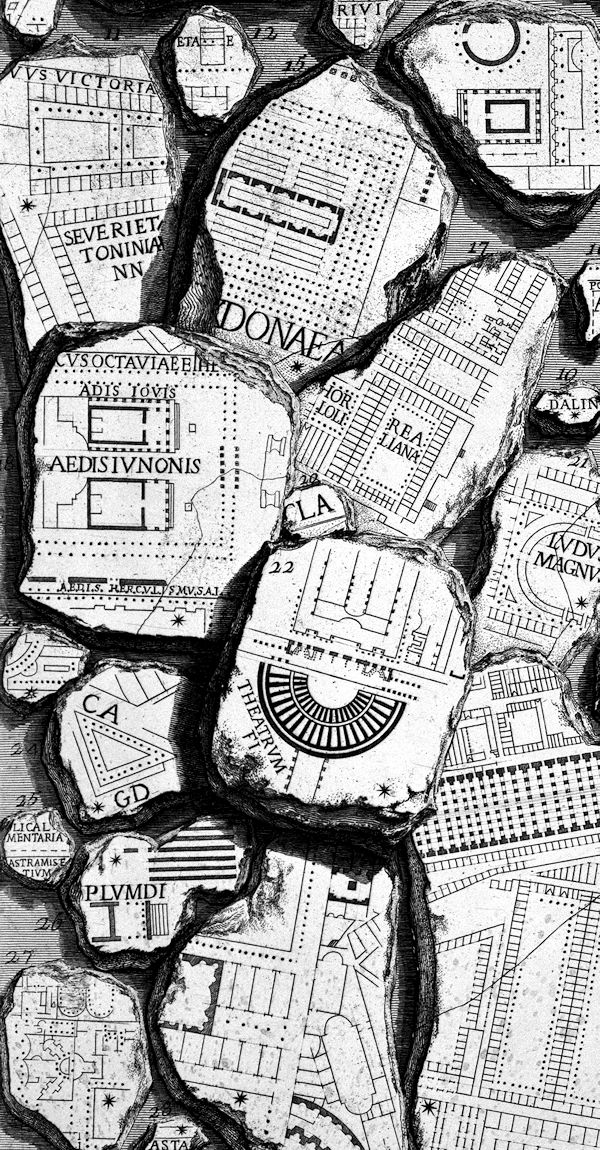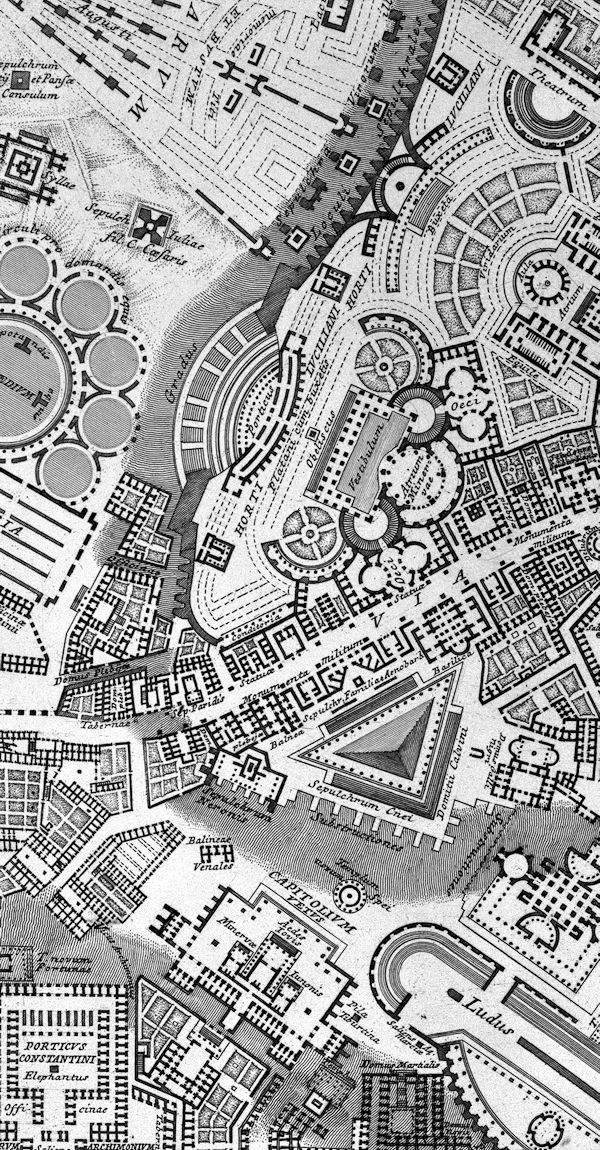1997.11.20
me and the Ichnographia
I have some thoughts regarding the Ichnographia as a stone fragment: this presentation on Piranesi's part could be considered a reenactment of the Forma Urbis--a virtual reenactment of discovering the great missing piece of the "puzzle" that will bring all the other pieces to a grand cohesion. (I am here reminded of Tafuri's opening comments to The Sphere and the Labyrinth.) The fragment stone map of the Ichnographia represents a kind of "missing link," a piece that explains the "real" architecture of Imperial Rome.
"There comes a moment (though no always) in research when all the pieces begin to fall into place, as in a jig-saw puzzle, where all the pieces are near at hand and only one figure can be assembled (and thus the correctness of each move be determined immediately), in research only some of the pieces are available, and theoretically more than one figure can be made from them. In fact, there is always the risk of using, more or less consciously, the pieces of the jig-saw puzzle as blocks in a construction game. For this reason, the fact that everything falls into place is an ambiguous sign: either one is completely right or completely wrong. When wrong, we mistake for objective verification the selection and solicitation (more or less deliberate) of the evidence, which is forced to confirm the presuppositions (more or less explicit) of the research itself. The dog thinks it is biting the bone and is instead biting its own tail."
Carlo Ginzburg and Adriano Prosperi, Giochi di pazienza: Un seminario sul "Beneficio di Cristo" (Turin: Einuadi, 1975), p. 84.
| |

| |

|